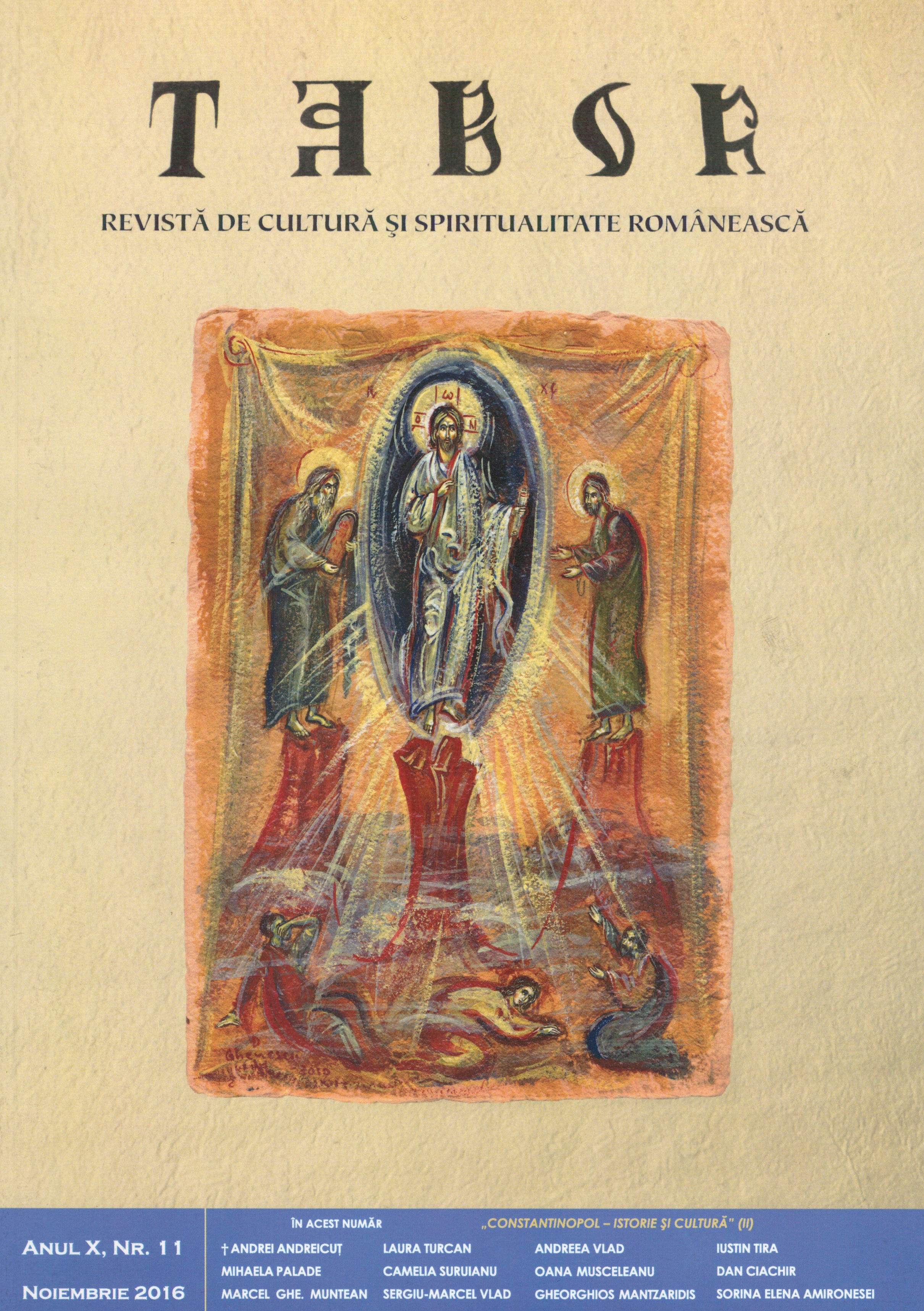Biserica Mănăstirii Chora din Constantinopol
The church of Chora Monastery in Constantinople
Author(s): Marcel Gh. MunteanSubject(s): Visual Arts
Published by: Renaşterea Cluj
Keywords: Chora Monastery; Christ the Savior; Theodore Metochites; Maria Palaiologina;
Summary/Abstract: The Constantinopolitan painting from the Paleologos period of the thirteenth century, has particular characteristics, albeit with the monumental mosaics of Chora Church we are at the beginning of the next century. They reflect the thought and sophistication of the logothet Theodore Metochites (1269 / 70-1332), which commissioned the building and the mosaic. The theme of the church represents two grandiose cycles: that of the Virgin and that of the Saviour. Mosaic artists were inspired by the content of the Holy Scriptures and Apocrypha sources to capture significant details that will arise the interest and emotions of the faithful. The figurative compositions develop in a broad of architectural and landscape spectrum, spaces that recall that the creators were inspired directly from ancient Hellenistic models, creating the feeling of a transcendental, unreal world with glows of precious glaze. The chapel was built and decorated in the time of the same Theodore Metochites. Interior decoration was executed in the same period with the adjacent church mosaics, respectively between 1315-1320. The specificity of this fresco comes from the eschatological theme in close connection with the realm of the dead, but also has themes from the life of the Virgin, which characterized this monument and gives it unique value. The glowing beauty of mosaics and frescoes of Chora Monastery, unique and signify cant monument during Palaeologian age, and whose wealth was reflected in all Christian culture, remain models for many other churches.
Journal: TABOR. Revistă de cultură şi spiritualitate românească
- Issue Year: X/2016
- Issue No: 11
- Page Range: 31-42
- Page Count: 12
- Language: Romanian
- Content File-PDF

